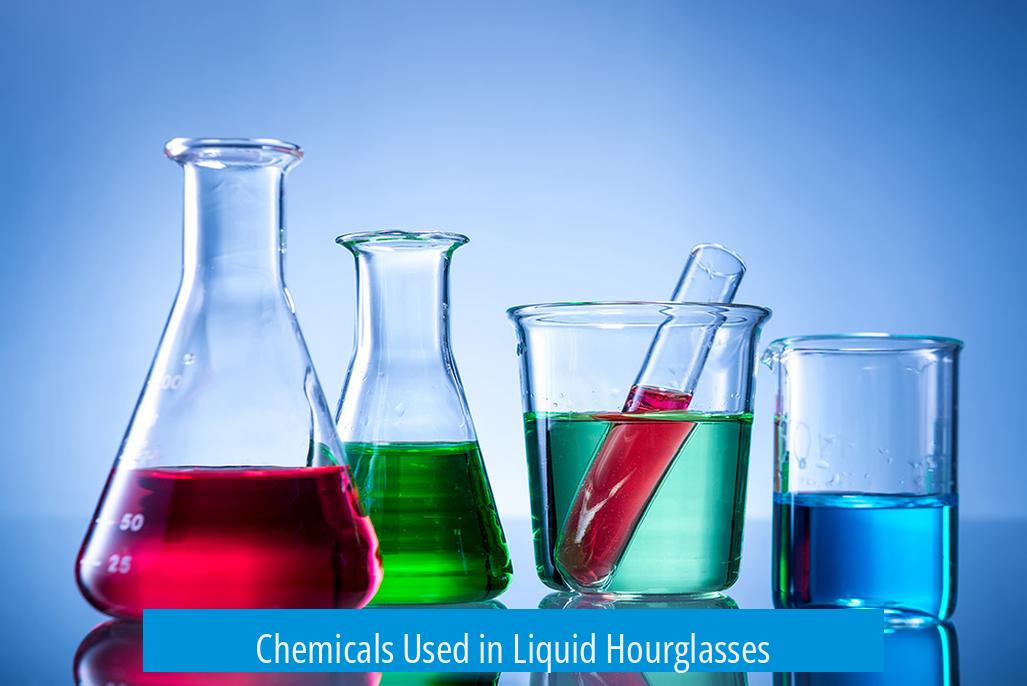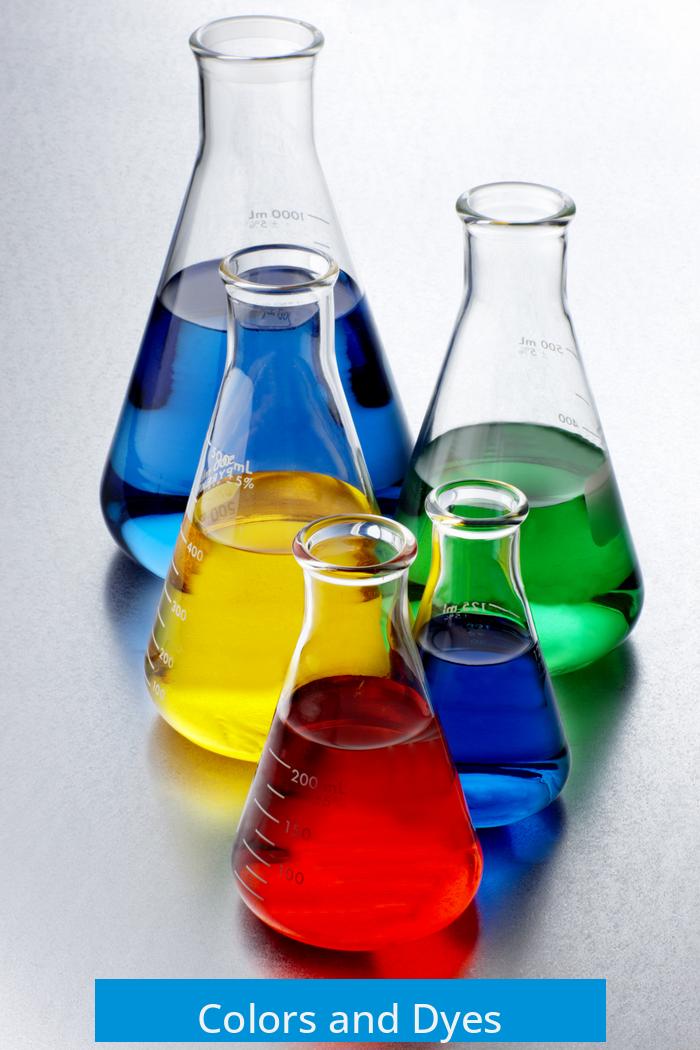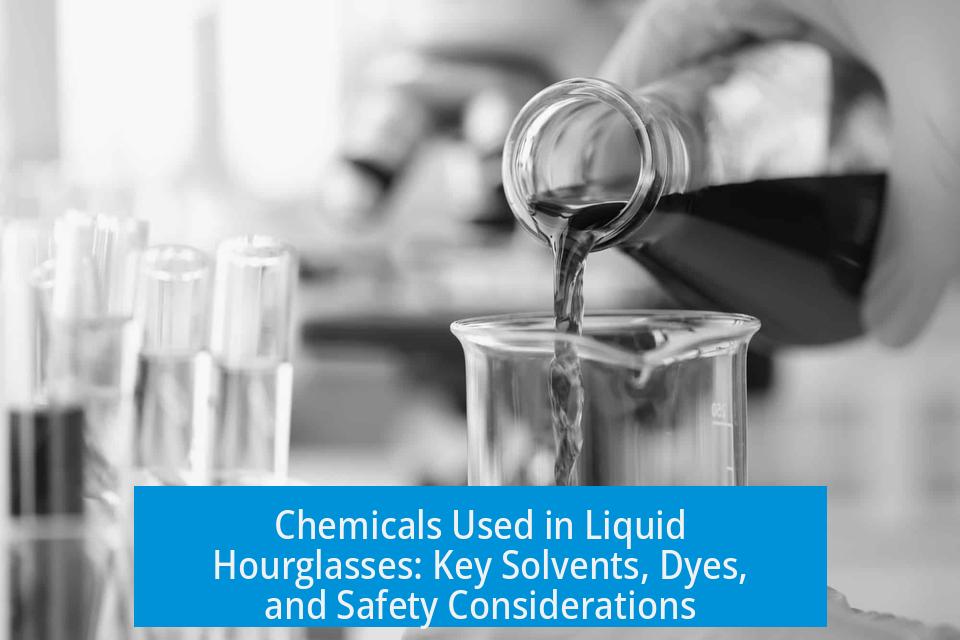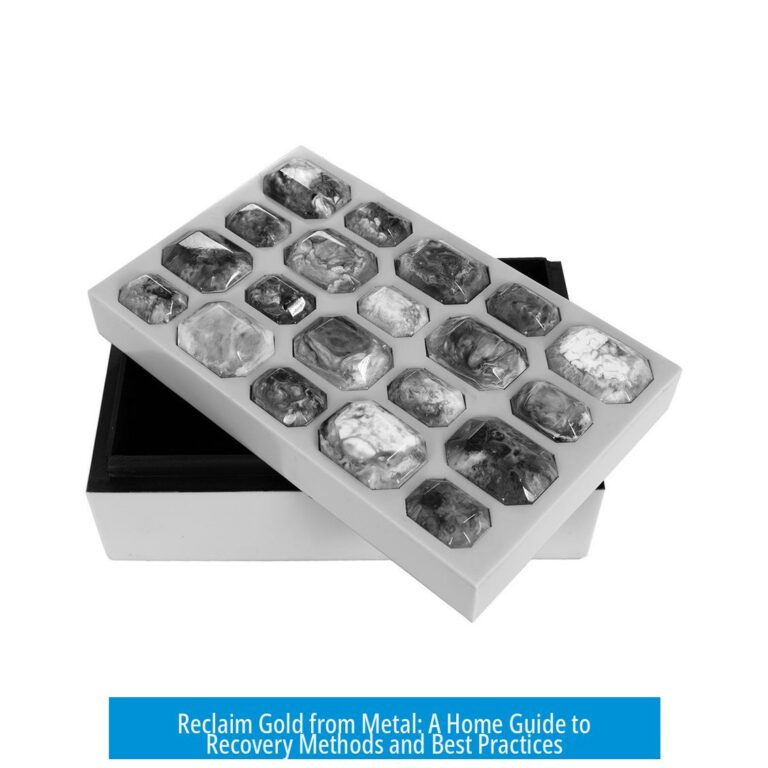Chemicals Used in Liquid Hourglasses

Liquid hourglasses rely on the controlled flow of two immiscible liquids, typically involving a polar and a non-polar solvent. Commonly, water serves as the polar solvent, while oils or other organic liquids act as the non-polar phase. These chemicals are selected based on their density, viscosity, safety, and ability to remain separate.
Solvents in Liquid Hourglasses
The core mechanism of a liquid hourglass is the flow of one liquid through another, which requires two immiscible solvents. Polar and non-polar solvents are essential for this purpose. Water, a polar solvent, pairs well with oils or organic solvents that are non-polar.
- Water and Vegetable Oil: A popular non-toxic and easily available pairing. Vegetable oil is less dense than water, allowing droplets of the denser dyed water to fall slowly through the oil phase.
- Mineral Oil, Paraffin Oil, Baby Oil: These oils are clear, non-toxic, and widely used in commercial and DIY liquid hourglasses. They possess suitable density and viscosity to facilitate smooth flow.
- Olive Oil: Sometimes used alternatively to vegetable oil; it shares similar properties and availability.
- White Spirit: A more fluid, less viscous solvent that can replace oils for better flow. However, it is flammable and requires careful handling.
- Hexanes (Mixed Isomers): An inexpensive, non-polar solvent with a density lower than water. Ideal for experimental or specialized hourglasses, but flammability and volatility are concerns.
Density Considerations
The density difference between the two liquids controls the flow rate and visual effect. The solvent’s density impacts how droplets fall or rise, affecting timing and smoothness.
| Chemical | Density (g/cm3) | Role in Hourglass | Remarks |
|---|---|---|---|
| Water | 1.00 | Polar solvent, usually dyed | Density can be increased with dissolved salts |
| Vegetable Oil | ~0.92 | Non-polar solvent, clear phase | Non-toxic, widely available |
| Mineral Oil/Paraffin Oil | ~0.8-0.9 | Non-polar solvent, often used as clear phase | Pharmacy grade options easy to find |
| Hexanes | ~0.66 | Non-polar solvent, less dense phase | Highly flammable; used experimentally |
| Methylene Chloride (DCM) | 1.3 | Non-polar phase, denser than water | Toxic; damages plastics and seals; rarely recommended |
Viscosity and Performance Adjustments
Viscosity determines how fast one liquid moves through the other. Oils tend to be more viscous than solvents like white spirit or hexanes.
- Vegetable and mineral oils provide a smooth, slow flow owing to their moderate viscosity.
- If the flow is too slow, less viscous solvents such as white spirit can be used to improve flow rates, but safety must be considered.
- The performance of the water phase can be adjusted by adding salts such as sodium chloride. Increasing the water density accelerates droplet movement.
Colors and Dyes

Color plays a key role in the visual appeal of liquid hourglasses. Typically, dyed water and clear oils create a striking contrast.
- Water is easily dyed with food coloring or water-soluble dyes to enhance clarity and visibility.
- Colored oils or adding pigments to the oil phase is less common due to solubility challenges.
- Using contrasting colors in the two phases improves the distinct flow effect.
Safety and Practical Factors
Safety is paramount, especially in DIY projects. Many solvents pose toxicity or flammability risks.
- Vegetable oil, mineral oil, and olive oil are non-toxic and safe for casual use.
- Hexanes and white spirit are flammable and should be handled with care in well-ventilated areas.
- Methylene chloride is toxic and harmful to plastic parts; its use is discouraged in typical liquid hourglasses.
- Seals, glues, and container materials must be compatible with chosen solvents to prevent degradation.
Additional References and Analogues
Liquid hourglasses resemble “sensory bottles,” a related craft where two immiscible liquids create soothing visual effects. These also typically use vegetable oils and dyed water.
For further experimentation, resources such as KiwiCo’s Liquid Hourglass DIY provide step-by-step recipes and material recommendations.
Key Takeaways
- Liquid hourglasses use two immiscible solvents: polar (usually dyed water) and non-polar (oils or organic solvents).
- Common oils include vegetable oil, mineral oil, paraffin oil, and olive oil for their safe, clear, and proper density characteristics.
- Density difference is critical; oils typically have density less than water, facilitating smooth droplet flow.
- Adjust viscosity and density for timing control by selecting solvents or adding salts to water.
- Use safe, non-toxic, and compatible materials to avoid damage and health risks.
- Dye the water phase for vivid color contrast and engaging effects.
Which solvents are commonly used in liquid hourglasses?
Liquid hourglasses often use a combination of polar and non-polar solvents. Commonly, water and vegetable oil or mineral oil are used. These liquids have different densities and do not mix, creating the dripping effect.
Why is density important in choosing chemicals for liquid hourglasses?
The liquids must have different densities. Usually, the solvent with lower density floats on the denser liquid. For example, hexanes are less dense than water, making them a good choice. Adding salts to water can increase its density for better flow.
Are there safety concerns with the chemicals used?
Yes, some solvents like methylene chloride are toxic and can damage seals or glue. Safer options include mineral oil or baby oil, which are non-toxic and easy to find at pharmacies.
Can I use dyes in liquid hourglasses, and how do they behave?
Dyes are typically added to the water phase because it is polar and retains color well. The oil phase usually remains clear. This contrast helps make the motion visually appealing.
What alternatives exist if common oils are too viscous?
If vegetable or mineral oil feels too thick, white spirit from hardware stores can be used as a less viscous non-polar solvent. However, always check safety and compatibility with the hourglass materials.





Leave a Comment